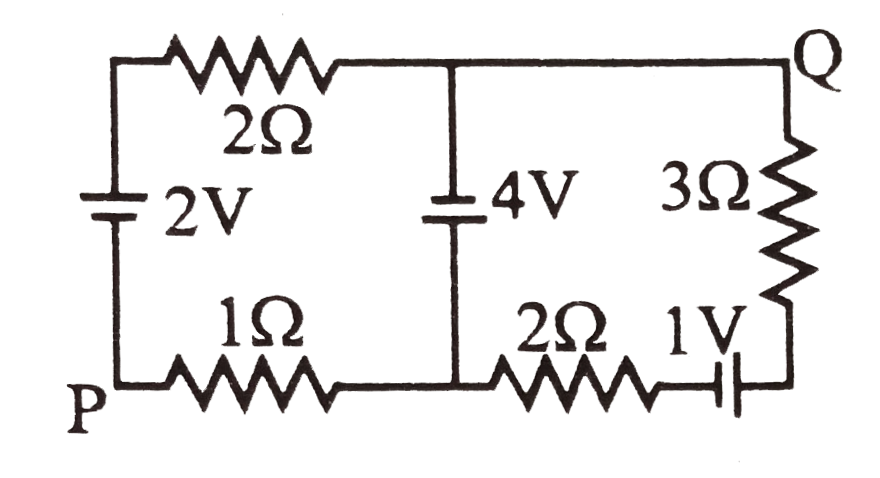In the circuit (Fig.) what is potential difference VB−VA (in V) when current I is 5A and is decreasing at the rate of 103As−1

Video Solution
Text Solution
The correct Answer is:(8)
VA−IR+E−LdIdt=VB
⇒VA−5×1+8−5×10−3(−10−3)=VB
⇒VB−BA=8V
|
Topper's Solved these Questions
- INDUCTANCEBOOK - CENGAGE PHYSICSCHAPTER - INDUCTANCEEXERCISE - Archives (fills In The Blanks)
3 Videos
- INDUCTANCEBOOK - CENGAGE PHYSICSCHAPTER - INDUCTANCEEXERCISE - Archives (single Correct )
8 Videos
- INDUCTANCEBOOK - CENGAGE PHYSICSCHAPTER - INDUCTANCEEXERCISE - Exercises (linked Compreshension)
36 Videos
- HEATING EFFECT OF CURRENTBOOK - CENGAGE PHYSICSCHAPTER - HEATING EFFECT OF CURRENTEXERCISE - Thermal Power in Resistance Connected in Circuit
28 Videos
- KINETIC THEORYBOOK - CENGAGE PHYSICSCHAPTER - KINETIC THEORYEXERCISE - Question Bank
31 Videos
Similar Questions
Knowledge Check
In the circuit shown, what is the potential difference VPQ?
 A+3VB+2VC−2VDnone
A+3VB+2VC−2VDnoneThe network shown in the figure is a part of complete circuit. What is the potential difference VB−VA when the current I is 5A and is decreasing at a rate of 103A/s?
 A5VB10VC15VD20V
A5VB10VC15VD20VIn the circuit shown, what is the potential different VPQ ?
 A+3VB+2VC−2VDNone of these
A+3VB+2VC−2VDNone of these
In the circuit shown , what is the potential difference VPQ?

View SolutionPotential difference VB−VA in the network shown is

View SolutionPotential difference VA−VB in the network shown in

View SolutionIn the given circuit, current I is 2A and it is decreasing at the rate of 103AS−1.Then VB−VA is
_PHY_E06_148_Q01.png)
View SolutionAB is a part of circuit. Find the potential difference VA−VB if
a. current I=2A and is constant,
b. current i=2A and is increasing at the rate of 1As−1,
c. current i=2A and is decreasing at the rate 1As−1,

View Solution

